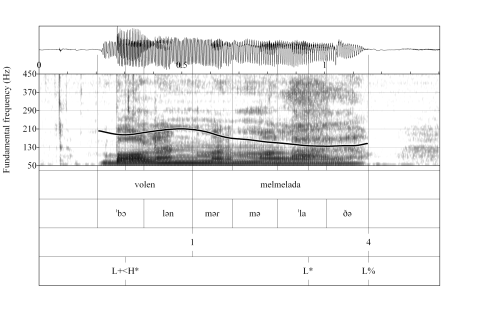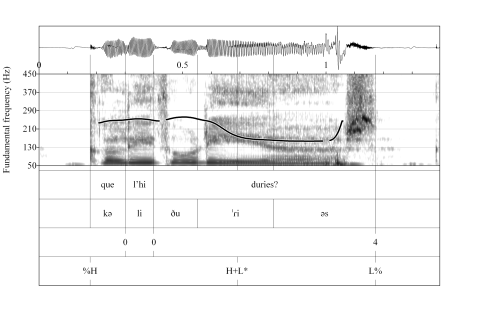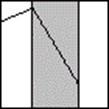H*

This pitch accent is phonetically realized as a high plateau, no initial dip is observed.
H+L*

This pitch accent is phonetically realized as a fall within the accented syllable. The start of the fall is aligned with the beginning of the accented syllable and the end of the fall is aligned (roughly) with the end of the stressed syllable.
Example H*: Wh-question
Example H+L*: Falling yes-no question
Què li duries?
[What would you take him/her?]

Que l'hi duries?
[Would you take it to him/her?]

Explanations
These two examples are two similar sentences, but the first one is a wh-question, and the second one, a yes-no question.
In the first example, we can see two H* pitch accents. The first pich accent is aligned to the wh-word què: the F0 is constant during this syllable and stays on a high plateau. The nuclear pitch accent is also H*: there is a high plateau during almost the whole syllable, and a fall occurs in the postaccented syllable.
In the second example, the pitch is high from the beginning of the sentence up until the onset of the last stressed syllable, where it starts to fall. There is an F0 turning point at the beginning of this syllable, which corresponds to a high target, and then there is a low target at the end of the syllable. This pitch accent is H+L*.
The difference between H* and H+L* is that H* is a high plateau, whereas H+L* is a fall and is acoustically perceived as low.







